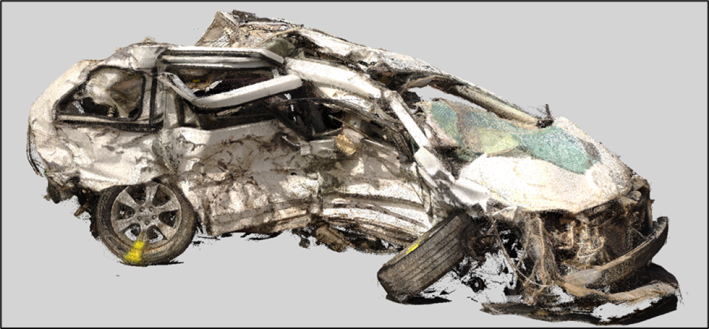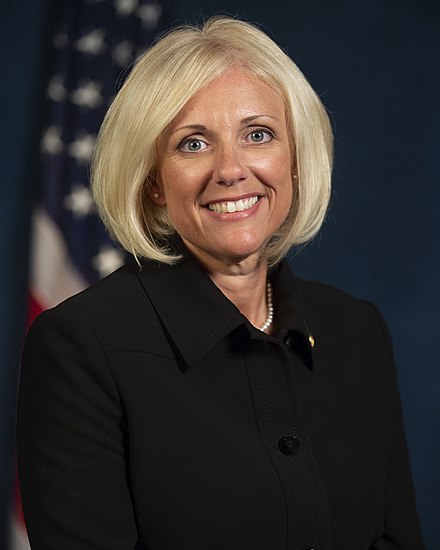The top federal roadway safety watchdog says America needs to confront the potentially deadly impact of reckless auto advertising on U.S. roads — and mandate technology that prevents drivers from ever reaching the lethal speeds that automakers depict in their commercials.
The National Transportation Safety Board last week issued a slate of new recommendations aimed at addressing the structural contributors to car crashes, in response to a particularly horrifying 2022 collision that resulted in the deaths of nine people.

That collision, the Board determined, was caused by the multiply impaired driver of a Dodge Challenger, who consumed cocaine and PCP before running a red light at 103 miles per hour on a 35 mile per-hour Las Vegas road. The driver of the Challenger, which is classed as a high-performance vehicle capable of unusually rapid acceleration, crashed into a mini-van that was carrying seven members of a single family — including four children between the ages of five and 15.
All seven, along with the Dodge driver and his passenger, were killed.
In addition to the driver himself, NTSB officials suggested that multiple parties played a role in the horror — including Dodge’s advertising team, which has become particularly notorious among sustainable transportation advocates for its aggressive marketing tactics.
And while not every automaker has openly compared its cars to “predators” or depicted them destroying “Share the Road” signs, the agency recommended that the car industry on the whole face more scrutiny for its advertising excesses, in the form of an Insurance Institute for Highway Safety report that “evaluates the safety outcomes of marketing by auto manufacturers that emphasize risky behavior, including speeding.”
Many countries prohibit car manufacturers from depicting dangerous driving in their ads, and some earlier research has found that those depictions "promote positive expectancies" about driving recklessly in real life.
“Some automakers are very responsible in how they market their vehicles — but there are also ones that repeatedly advertise their cars as a way to flagrantly disobey traffic laws,” NTSB Chair Jennifer Homendy told Streetsblog in an interview. “Vehicles are shown speeding on normal downtown roads ... It’s incredibly irresponsible.”
In addition to advertisers, the NTSB also recommended that the National Highway Traffic Safety Administration take more accountability for its role in tragedies like the Vegas crash — starting with mandating Intelligent Speed Assistance technology that senses the local limit and either alerts the driver that they’re exceeding it, or physically limit the vehicle’s speed.

That anti-speeding tech is already required on new cars in Europe, and the NTSB has previously recommended that NHTSA at least give vehicles extra points in their New Car Assessment Program evaluations if they were similarly equipped. The Vegas crash, though, convinced the agency that it’s finally time to make ISA a full-blown motor vehicle safety standard.
“[NHTSA] views this as tech that’s not yet proven and needs more research, even while other countries are already mandating [it],” Homendy added. “The fact is, U.S. regulators are far behind; if they can do it somewhere else, we can do it here. And just using NCAP isn’t enough.”

Homendy acknowledged that drugs absolutely played a role in the Vegas driver’s rate of speed, and points out that the Board has long called for a range of systemic strategies to mitigate impaired driving of all kinds — few of which federal regulators have yet acted on, despite a recent congressional mandate to do so. Now, she says it's time for the federal Department of Transportation to aggressively pursue speed-limiting technology as part of its anti-DUI strategy — because all too often, the two behaviors are deeply intertwined.
“We know for a fact that about 12,000 people a year die on our nation’s roads in speeding-related crashes," added Homendy. "We know about 11,000 die in impairment-related crashes, and a lot of times, it’s a mix of the two. ... If we had tech that prevented speeding and impaired driving, we would save lives. We’ve recommended both, and NHTSA has done absolutely nothing."
While America waits for real traffic violence prevention strategies, the Board says NHTSA also isn't taken enough action to encourage states to track and hold recidivist speeders accountable — and if all else fails, remove their driving privileges. According to local media, the Vegas driver had racked up multiple DUIs and speeding offenses before his death, some of which were pleaded down to minor charges that did not appear on his permanent driving record and were only later discovered based on court receipts.
“The way the Nevada courts dealt with it was pleading [his offenses] down to a parking ticket — essentially, a slap on the wrist," Homendy added. "And as a result, other courts couldn’t track his history … I know there’s a lot of debate on enforcement, but other countries that are very strict on Vision Zero have very stringent consequences for violating the law, especially when it comes to reckless driving. But this individual was just passed through the system."
The board recommended that NHTSA "update the Uniform Guidelines for State Highway Safety Programs to include tracking for repeat speeding offenders," and for states to implement such better tracking whether or not federal regulators act — because if history is any indication, they probably won't.
"It takes the political will to take a strong stance on safety and make the changes that need to happen to save lives," Homendy added. "If we’re serious about implementing a National Roadway Safety Strategy that saves lives, we need to implement these changes. so other families don’t have to face similar tragedies."






